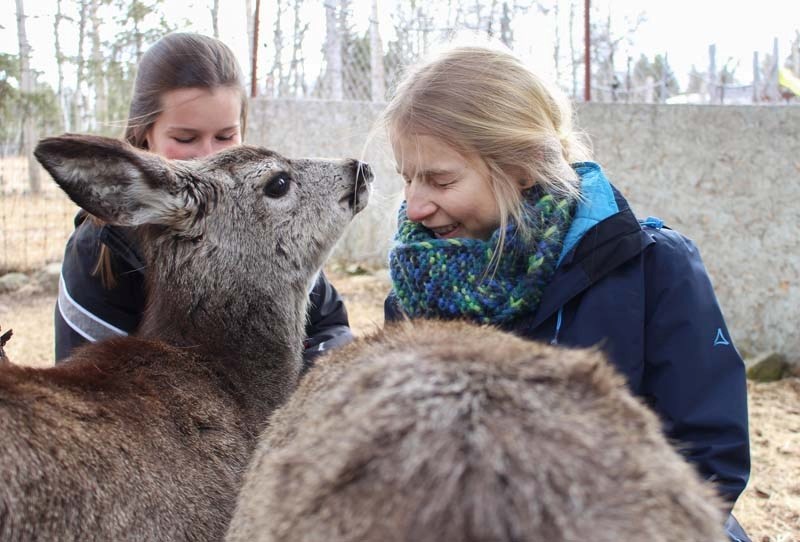For 50 years, the bountiful wildlife and animal care opportunities at the Cochrane Ecological Institute (CEI) have attracted students from across the globe.
Having worked with 51 universities and tech schools across 27 countries, as well as six Canadian provinces, CEI has provided numerous students, particularly from European regions, with a space to interact with Canadian wildlife hands-on.
“One of the reasons that many of the students come from Europe is because it is such a unique experience,” said Ken Weagle, director at CEI and husband to institute president, Clio Smeeton.
Founded in 1967 by Smeeton and her parents, CEI has housed numerous native animal species for rehabilitation and reintroduction, such as bison, moose, muskrat, turkey, owl, hawk, elk, squirrel, deer and swift fox.
“I mean, to get so close to big wild animals like that, it’s quite impressive,” said Gaël Misselyn, an intern student from Ghent University in Belgium.
Misselyn is from Antwerp, Belgium, and is studying agriculture and biological technology at Ghent, specializing in animal care.
“I knew I really wanted to come to Canada because of its beautiful nature, and I was really interested in the wildlife from here,” said Misselyn.
“The wildest thing we have in Belgium is like, a squirrel or a boar.”
Over the two and a half months of her internship, Misselyn has been studying parasite activity in the feces of bison.
“The thing is, Europe doesn’t have the wildlife to study, you just don’t see that in most of the European countries,” said Weagle.
“They really want to get to a place where they’re going to see bears, they’re going to see moose, and see all these other animals that they read about.”
Students are tasked with feeding the recovering animals and helping with the release when they have regained their health.
“For me, it’s a really good example of how to deal with and help wildlife that is native to this country,” said Sarah Layendecker, intern student studying wildlife management at the VHL University in Leeuwarden, Netherlands.
Layendecker is working with the CEI over a five-month period researching the grazing routines of bison.
“They show an odd grazing behaviour where they over-graze certain areas, and they leave other areas alone,” said Layendecker.
Layendecker is experimenting with several methods to encourage the bison to feed in the under-grazed regions, such as mowing or burning the grass in untouched areas, then letting it regrow fresh to observe how the bison react.
“If that works, that might be an option for the institute later on,” said Layendecker.
The institute also offers work experience for students pursuing studies in veterinary care.
“We have arrangements with the various vet clinics, where the students will go in and spend time with actual certified vets,” said Weagle.
Smeeton and Weagle have made many close friends with the interns that study through CEI.
Peter Neuhaus and Kathreen Ruckstuhl, two students from Switzerland, studied at the institute in 1993, and both went on to teach biological sciences as professors at the University of Calgary.
“They sort of consider us their Canadian surrogate parents,” said Weagle.
In 2006, Smeeton and Weagle opened the Happytails Pet Retreat alongside the wildlife reserve in order to generate the funds to keep the CEI operating, rather than relying on grants and donations.
“It’s nice to see how a place like this runs,” said Layendecker.
“These guys have to deal with a lot of people, communities, and government, and it’s a good example to see how it all works together and how to get your money for saving wildlife.”
Interns assist with kennel duties, including walking the dogs, feeding the cats, and maintaining the living space for the animals.
“They’re domestic animals, but you still have to manage them and you really have to understand their behaviour, we concentrate on a lot of the behavioural aspects of it,” said Weagle.
“This was perfect because it’s wildlife, dogs, and cats so I get a little bit of the kennel side, I get a little bit of the wildlife management, and I can still translate that to what I want to do later in Belgium,” said Misselyn.
“I’m sure it will help me in the future.”




